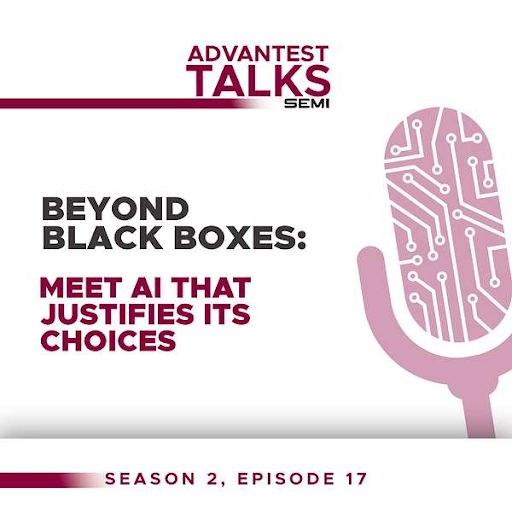Data Management Frontiers: Navigating the Semiconductor Landscape with Joe Addiego of Brave Capital

Joe Addiego is a seasoned operating executive and investor with over 20 years of operating experience in technology. His executive leadership contributed to two successful initial public offerings (IPOs), showcasing his strategic acumen in guiding tech companies through critical growth phases. Joe’s operational expertise spans control systems, real-time operating systems, and software development tools, with expertise in data management, networking, and cybersecurity.
Joe has spent the last 25 years as an investor, nurturing startups and establishing markets for innovative technologies holding prominent roles at In-Q-Tel, Alsop Louie Partners, and Brave Capital. As a lead investor for the real-time database company Aerospike, he addressed the data management industry’s need for guaranteed low latency and low cost of ownership. More recent investments include Crunchy Data, an open-source PostgreSQL company that provides a trusted Postgres implementation for enterprises to use either on premises through Kubernetes, or in the cloud as a managed service.
Crunchy Data recently augmented its cloud implementation to include a next-generation Postgres-native data warehouse, enabling everyone to take advantage of high-performance data analytics without leaving Postgres. Throughout Joe’s career he has succeeded at creating new markets for innovative technologies.
In this episode, we dive deep into how data serves as the foundation of cutting-edge innovations across AI, machine learning, adaptive testing, and cybersecurity. This conversation leads us to a comprehensive look at the evolution of data management—from the early days of punch cards and magnetic tapes to today’s sophisticated database systems and cloud solutions.
Throughout the episode, Joe shares his insights on the transformation brought about by the internet era, which has revolutionized how we store, manage, and leverage data in real time across the globe. We’ll examine how these advancements have fueled the explosion of data volumes and how modern technologies have adapted to handle this surge with unprecedented efficiency and security.
Tune in to “Advantest Talks Semi” for a thought-provoking discussion on the history, current trends, and future of data management within the semiconductor industry, and gain valuable perspectives on navigating the complexities of today’s data-driven world. This episode is essential for anyone interested in the intersection of technology and business strategy, providing a clear understanding of how data continues to drive innovation and success in the high-tech landscape.
Read MoreBeyond Black Boxes: Meet AI that Justifies Its Choices

Unlock the secrets of AI innovation with our esteemed guest, Jem Davies, non-executive director at Literal Labs. Jem shares his transition from Arm to Literal Labs, revealing how the revolutionary Tsetlin machine sets new benchmarks in efficiency, power usage, and processing speed.
Jem is a highly experienced business leader and technologist, having previously served 18 years at Arm. He is an engineer and was an Arm Fellow, holding multiple patents on CPU and GPU design. Jem’s career moved into business management and he became a general manager first in Arm’s Media Processing Groups, then the founding general manager of their Machine Learning group. In addition to setting future technology roadmaps, he also worked on several acquisitions leading to building new businesses inside Arm, including the Mali GPU (the world’s #1 shipping GPU) and Arm’s AI processors. Jem left Arm in 2021 and is currently chair of NAG and a non-executive director of Literal Labs, BOW, CamAI, and Cambridge Future Tech.
Explore the crucial role of explainable AI and why it matters more than ever in today’s regulated industries like healthcare and finance. Jem discusses Literal Labs’ Tsetlin Machine, which offers an intuitive audit trail of AI decision-making through propositional logic. This approach is breaking new ground by enhancing model efficiency without compromising on performance. We also tackle the challenge of unbiased training data and how tailored levels of explainability can make AI accessible to everyone, from everyday users to industry experts.
As we gaze into the future of AI, we tackle the pressing issues of bias, energy consumption, and the potential impact of quantum computing. Jem provides insight into how Literal Labs is pioneering tools to promote ethical AI development, mitigate biases, and democratize AI innovation. From practical applications like water leak monitoring to the potential for AI to evolve into a tool of unimaginable uses, we reflect on how the intersection of explainability, energy efficiency, and bias shapes a responsible AI future. Join us for an episode that promises to broaden your understanding of AI’s profound societal impact.
Read MoreSemiconductor Manufacturing and GlobalFoundries: How Essential Chips Drive Tech Innovations beyond 2024

Unlock the secrets behind GlobalFoundries’ ascent to semiconductor supremacy and find out how a colossal $1.5 billion boost from the U.S. CHIPS Act is setting the stage for technological innovation. Our guests, John Carulli, Ken Butler, and Shinji Hioki, join us from the frontlines of chip manufacturing to share their expertise on what it takes to be a pure-play foundry in today’s competitive market.
In this vibrant episode we track the transformation of silicon wafer dreams into the tangible powerhouse chips that energize our daily devices, dissecting the interplay of design, production, and the crucial customer relationships that drive the industry forward.
Feel the pulse of the semiconductor world as we tackle the elephant in the room: the pressures of Moore’s law and the herculean task of safeguarding tech’s most sensitive data. This episode is a call to arms for more transparent collaborations between foundries, assembly, and test operations, with an eye on the future where open data flow might just be the magic ingredient for enhanced yield management and efficiency.
As we wrap up our journey, we turn our attention to the fertile minds of tomorrow’s tech leaders. We discuss how acts like the CHIPS Act and mainstream conversations about semiconductors are sparking interest among the youth, encouraging them to pursue careers in this electrifying field. Our conversation weaves through the importance of engaging storytelling in tech education, making semiconductor testing and assembly as thrilling as time travel adventures for the next generation.
John Carulli holds seven U.S. patents. He has over 50 publications in the areas of reliability, test, and process development. He serves on the organizing or program committees of several conferences, including the International Test Conference, VLSI Test Symposium, and European Test Symposium.
Ken Butler is a Senior Director of Business Development in the Advantest Cloud Solutions (ACS) data analytics platform group at Advantest.
Shinji Hioki joined Advantest ACS in 2022, focusing on developing the ACS business in Japan.
Read More